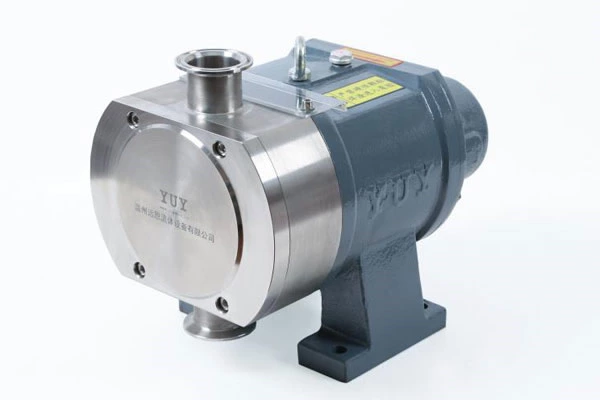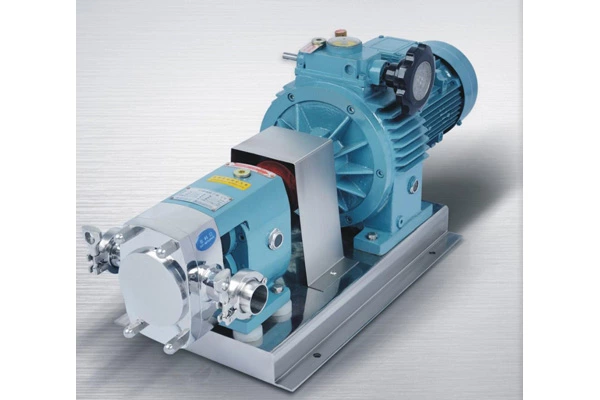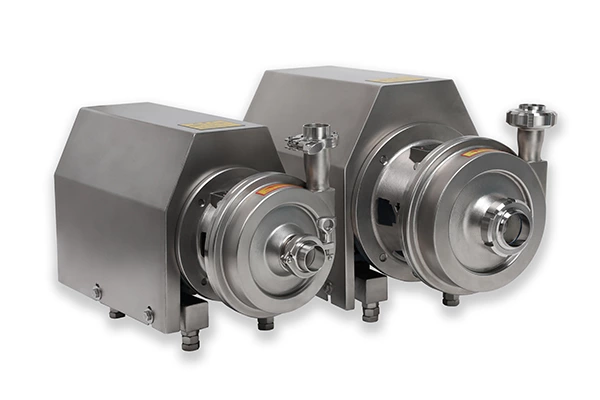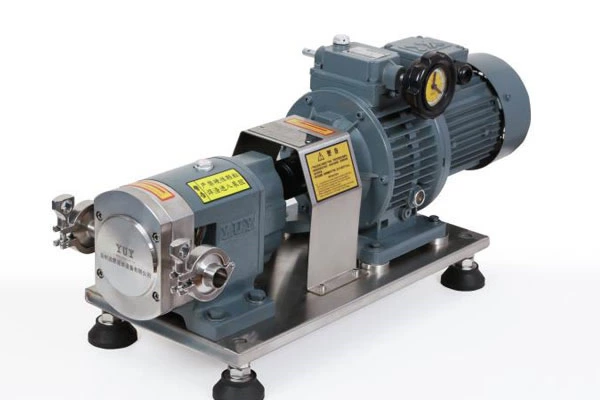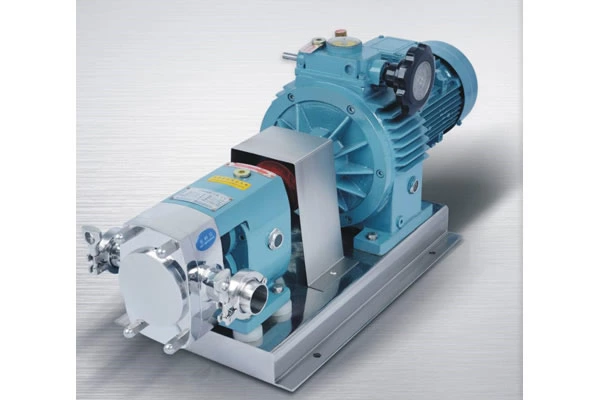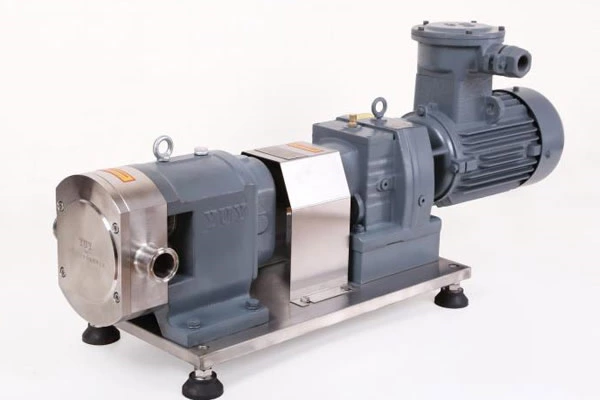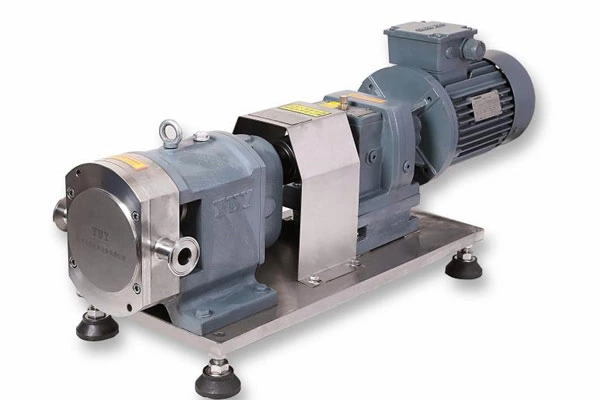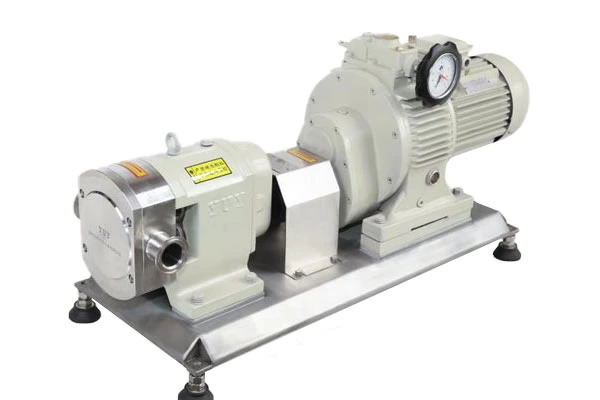Causes Of Cavitation In Sanitary Rotary Lobe Pumps
Sanitary Rotary Lobe Pump The basic structure is composed of: impeller, pump body, bearing body are the main external parts of sanitary rotary cam pump; the core part of self-priming centrifugal pump is composed of shaft, bearing, mechanical seal, among which the impeller determines the flow rate; pump body is also called pump shell, which is the main body of water pump. It plays a supporting and fixing role and is connected to the bracket for mounting bearings. The function of the pump shaft is to connect with the motor through the coupling and transmit the torque of the motor to the impeller, so it is the main component for transmitting mechanical energy. The bearing is a component that supports the pump shaft and is sleeved on the pump shaft. There are two types of rolling bearings and sliding bearings.
Flow components of sanitary rotary cam pump The flow components of self-priming centrifugal pump are: suction chamber, impeller, and discharge chamber. The impeller chamber is the core of the pump and the core of the flow component. The pump increases its energy by the work done by the impeller on the liquid. Impellers are divided into three categories according to the direction of liquid outflow: Radial impeller (centrifugal impeller) The liquid flows out of the impeller in a direction perpendicular to the axis. The liquid of the oblique flow impeller (mixed flow impeller) flows out of the impeller in the direction of the axis tilt. The direction of the liquid flow of the axial flow impeller is parallel to the axis. The impellers are single suction and double suction. The sanitary rotary cam pump produced by our company is a closed impeller single suction structure. The mechanical seal is a corrosion-resistant mechanical seal. It is used for seawater, chemical liquids, gasoline, diesel and other flammable and explosive media.
The biggest advantage of the sanitary rotary cam pump is that it can be self-priming, which is different from the operation of other pumps. When used for the first time, just fill the sanitary rotary cam pump with water and then turn it on. You don’t need to fill it with water every time in the future. The principle is very simple. The impeller in the pump rotates, a vacuum is formed in the pump casing, and the water is pressed into the pump by atmospheric pressure to form a cycle. Therefore, sanitary rotary cam pumps often have some faults, such as cavitation. Let’s introduce it in detail below.
The reasons for cavitation of sanitary rotary cam pumps are roughly as follows:
The installation height of the sanitary rotary cam pump is too high. As the installation height of the centrifugal pump increases, the vacuum at the pump inlet increases, causing the pressure in the pump to drop too low.
The actual working conditions of the sanitary rotary cam pump are far from the designed working point. When the water pump is running under non-designed conditions, a belt-shaped vortex (called vortex belt) from bottom to top may also occur under the impeller. When the pressure in the vortex belt drops to the saturated steam pressure, the vortex belt becomes a cavitation belt. When this vortex belt extends into the pump, it can not only promote and aggravate the cavitation of some parts of the water pump, but also cause strong vibration of the unit and emit a roar.
The water inlet condition of the sanitary rotary cam pump is not good. For pumps with elbow-shaped water inlet channels, the uneven distribution of flow velocity and pressure in the bend causes uneven distribution of flow velocity at the pump impeller inlet. The vortex in the water inlet pool will cause the water entering the water pump to pre-swirl or bring in air, which will also cause uneven distribution of flow velocity and pressure at the impeller inlet, leading to cavitation and cavitation. According to foreign cavitation experimental data, the greater the gas content in the water, the earlier the cavitation starts.
If the altitude of the sanitary rotary cam pump is higher, the water temperature transported by the sanitary rotary cam pump will be higher. In high-altitude areas, the atmospheric pressure is lower, which will cause the pressure at the pump suction inlet to be lower accordingly; and the higher the water temperature, the greater the saturated steam pressure will be, and the easier it is for water to vaporize. After a detailed understanding of the above-mentioned causes of cavitation in sanitary rotary cam pumps, it is hoped that users will pay attention to avoiding the above-mentioned factors that may cause cavitation during the use of sanitary rotary cam pumps. Ensure that the sanitary rotary cam pump can work stably and durable.
